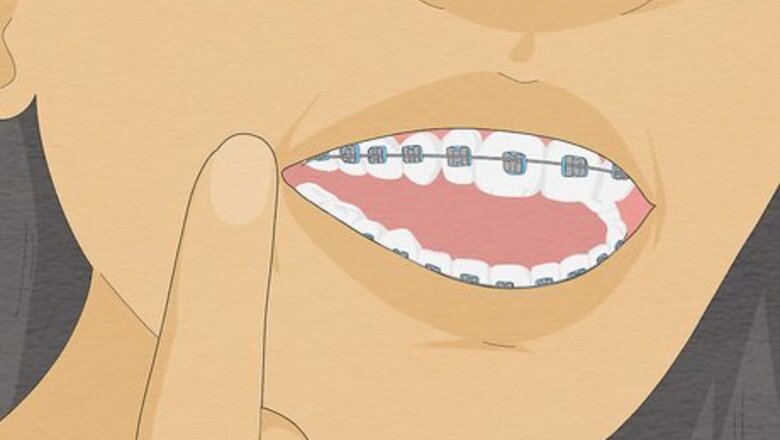
views
Bending the Wire Back into Place
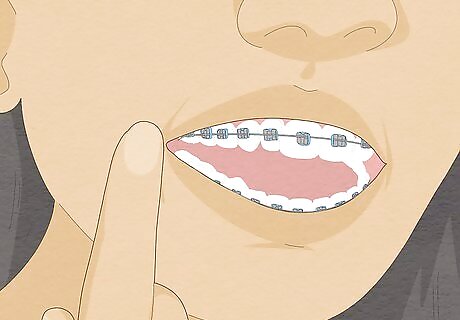
Feel where the wire has come loose. Wires can come loose over time, or due to chewy food. According to Dentist Shayne Guffey, "It is important to take action when a wire becomes loose or broken to avoid any damage or infection to your mouth." Make sure the bracket itself is still attached to your tooth. Also, make sure that the wire has not come completely out of the bracket. If the wire has come out of the bracket, attempt to slide it back into place. You may need someone else to help you with this. If the bracket has come off of your tooth as well, call your orthodontist to have it put back on.
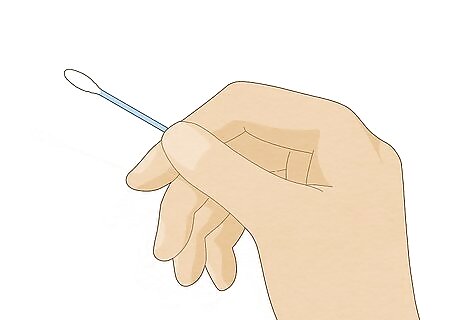
Find a small, dull object to push it back into place. Dentist Shayne Guffey suggests that, "it may be possible to just gently bend the wire end away from the lip or cheek." Many things can be used for this purpose. You can use a pencil eraser, the back of a spoon, or a cotton swab. If you don't have any of these on hand, look for another small, dull object to do the job. Make sure whatever object you use is clean. You never want to put something dirty into your mouth. Cotton swabs are clean right out of the package. You can wash your spoon with dish soap as you normally would.
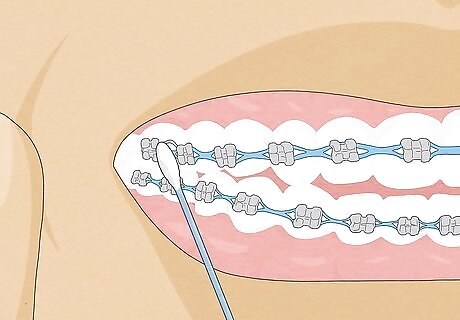
Use the object to push the wire into place. Gently slide the object into your mouth. You may need to look in a mirror to see what you're doing. Press the wire back into place so that it sits close to your teeth once more. If you can't see what you're doing in the mirror, you can ask a friend or family member for help. Be gentle as you push — the wire can slip out and pierce your cheek or gums. You don't want to hurt yourself or knock another wire out of place.
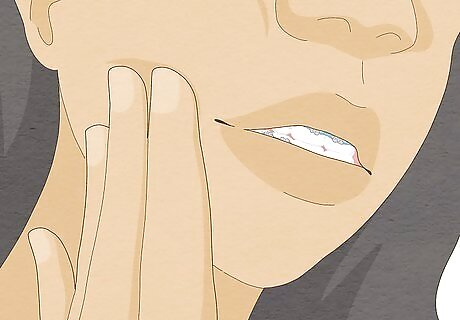
Make sure the wire no longer rubs against your cheek. With your tongue, feel the area where the wire came loose. It should feel similarly to how it did before coming loose. If you have any discomfort or if the wire is scraping your cheek, you should try another method or book an appointment with your orthodontist.
Covering the Wire with Wax

Create a small ball of dental wax. Dental or “relief” wax should be available from your orthodontist, or at your local drug store. Roll the wax into a ball that is about the size of a popcorn kernel or a pea. The wax should be easy to mold with your hands. If you can't find dental wax at the store, and your orthodontist is unavailable, you can order it online.
Dry your brace and the wire. Use a paper towel to dry the brace and the wire. The wax will not stick well if the wire is very wet. Try to keep your mouth dry while you apply the wax by breathing through your mouth and not swallowing.
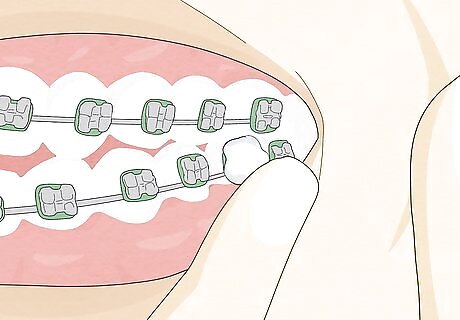
Push the wax ball onto the wire. Once the wax is on the wire, smooth it down over the end of the wire all the way to the bracket. This should make the end of the wire soft enough that it no longer irritates your cheeks or gums. The wax may fall out at some point. You can replace the wax as often as necessary until your orthodontist can fix the wire permanently. Dental wax isn't toxic or dangerous, so don't worry if you accidentally swallow it.
Cutting the Wire
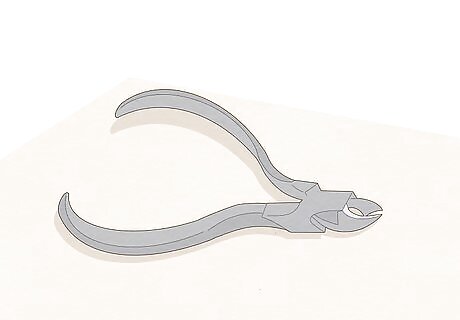
Find a pair of small wire cutters. Braces wires can be very easy to cut. You won't need anything very large. Dentist Shayne Guffey notes that, you can also "use a pair of nail clippers or pliers to cut off sharp ends; this will keep the wire away from the cheek and gum and stop irritation to the inside of your mouth." Choose a pair of pliers or small wire cutters that can fit comfortably inside your mouth. Distal end wire cutters are best, since they will grip the cut piece of wire. This helps avoid the possibility of you swallowing part of the wire.

Sterilize the wire cutters with alcohol. Anything you put in your mouth should always be clean. Wipe the wire cutters down with rubbing alcohol before putting them into your mouth. You should also sterilize nail clippers if using those. Let the alcohol dry or evaporate before inserting the wire cutters into your mouth. Use the wire cutters soon after cleaning them. If they lie around for a long time, they may be exposed to bacteria.
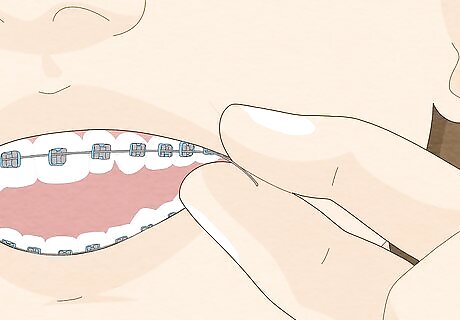
Place your finger on the wire you plan to cut. This helps prevent the clipped part of the wire from flying into the back of your throat. You want to avoid swallowing the wire at all costs. Swallowing the wire can be painful and sometimes dangerous.

Ask for help if you don't feel comfortable. It may be difficult to see and cut the wire by yourself. If there's any chance you won't be able to do the job neatly and without hurting yourself, ask a friend or family member for help. Avoid shaking the wire too hard or pushing with pressure on the back teeth while trying to cut the wire, as you can detach any of the brackets. You can try looking in the mirror under a bright light. Not all wires will be visible or easily accessible to you.

















Comments
0 comment